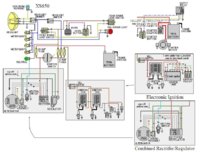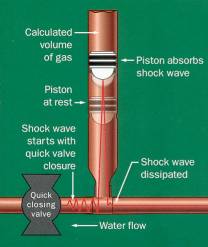The condenser unit is actually a pair of 0.22mf capacitors, one for each point. Their primary purpose is to offload current rush from the points, so the points won't arc, and last longer. They're sort of the electrical equivalent to the plumber's "Water Hammer Arrestor".
When a flow of electricity or water is abruptly stopped, there's a momentary pulse that slams into the valve (or points), that can cause 'water hammer', or points arcing.
With a water hammer arrestor (or points condenser), that momentary pressure pulse is redirected into and absorbed by the arrestor (condenser), saving the valve (or points).
What is not commonly known, is that, in the points/condenser/coil kettering ignition system, when the point opens, current flows into the condenser, stops, then reverses. The condenser acts like a electron spring, and sends a short rush of current backwards thru the coil. This little current flows back/forth thru the coil a few times until it's dissipated. This is because the inductive coil and condenser form an LC tank (Inductor/Capacitor) that has an inherent natural frequency. The result is that you can get multiple sparks, a little known benefit.
If your engine runs poorly, and the point(s) display a visible arc while running, that's a good sign that a condenser has failed...





